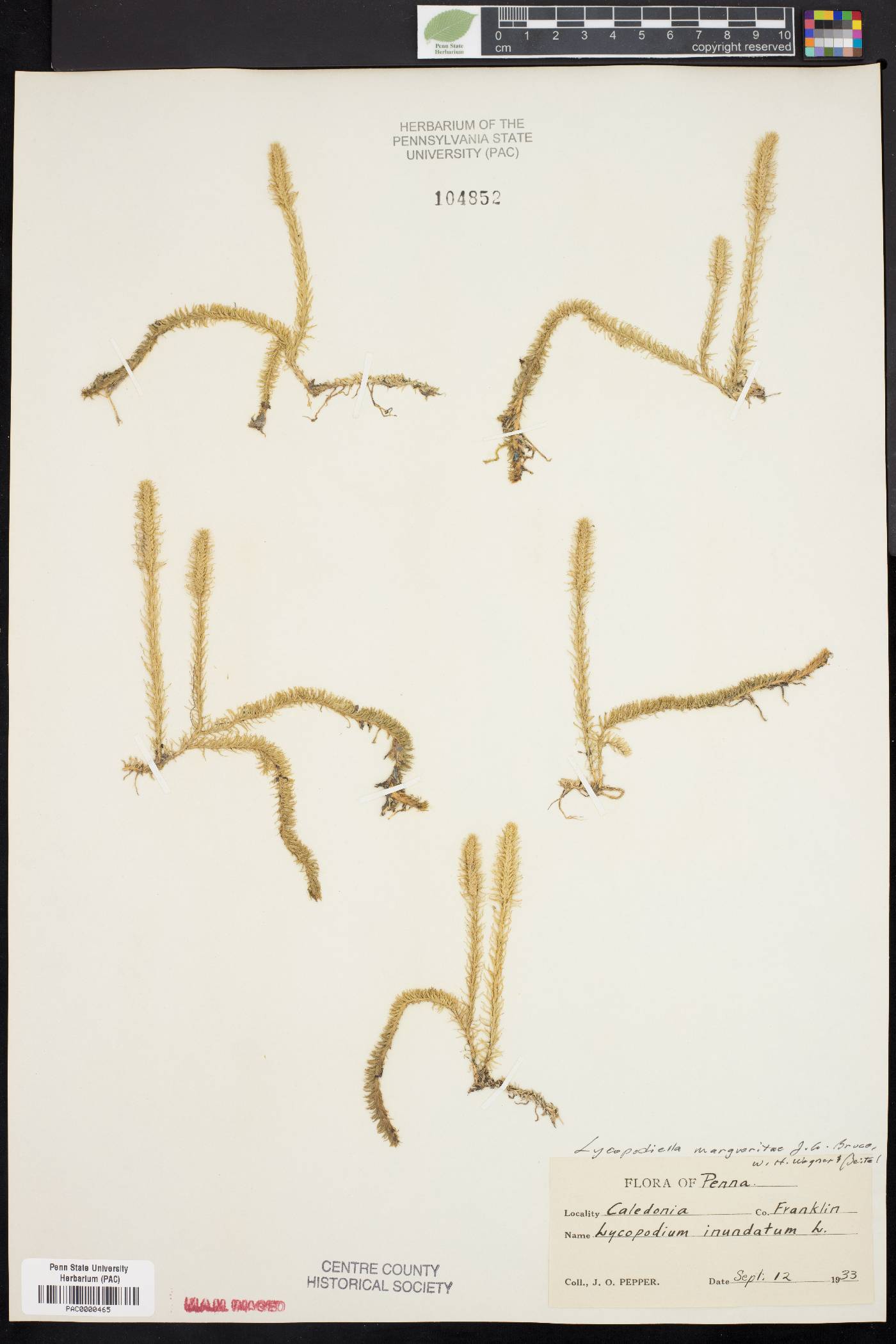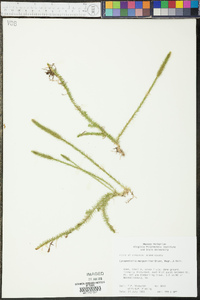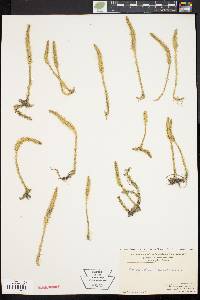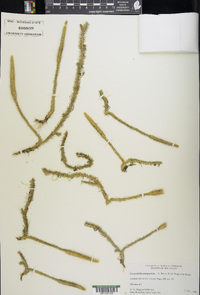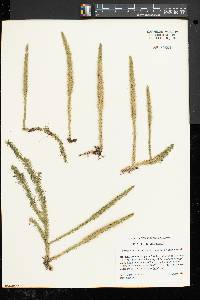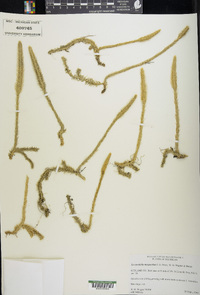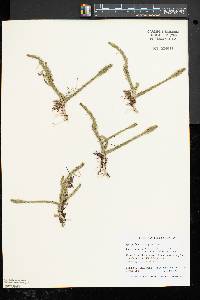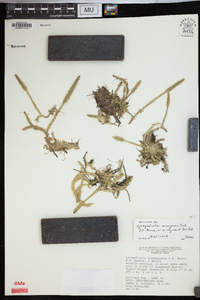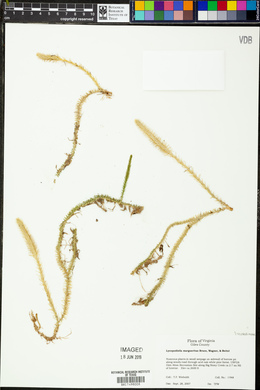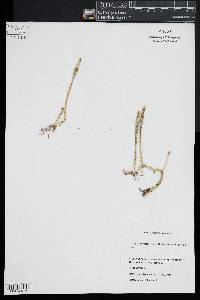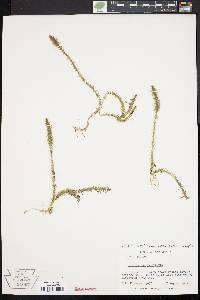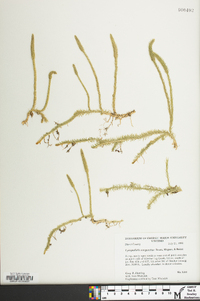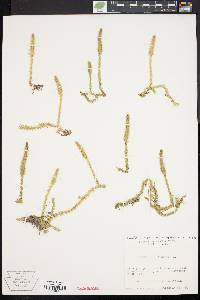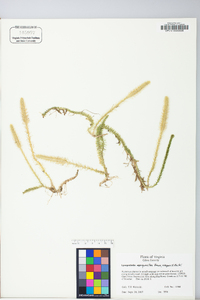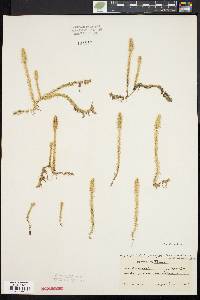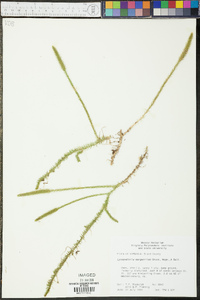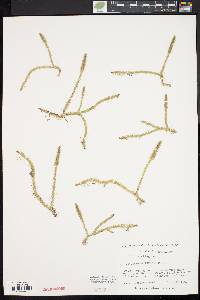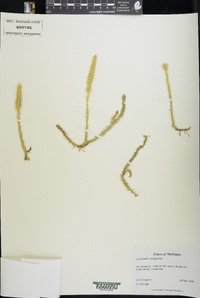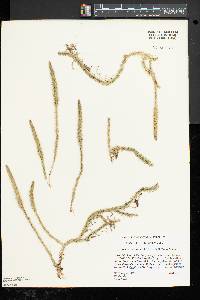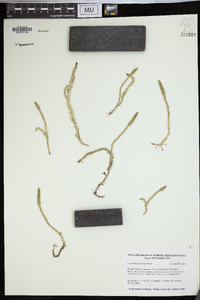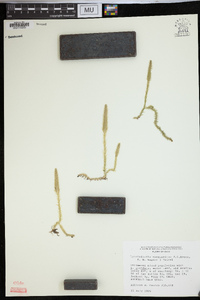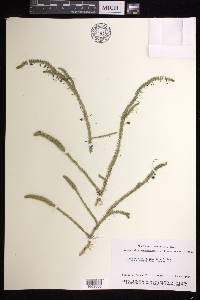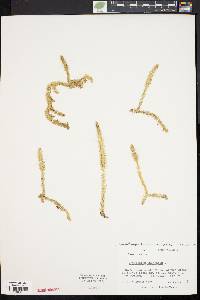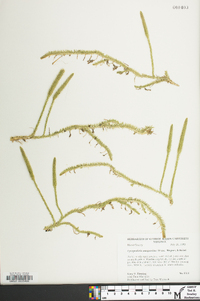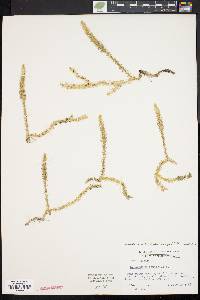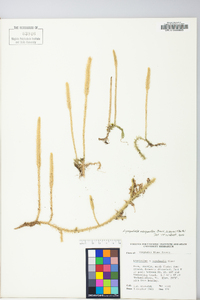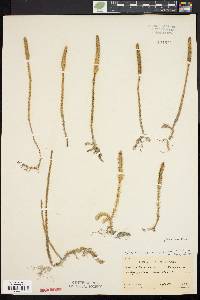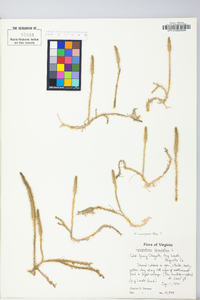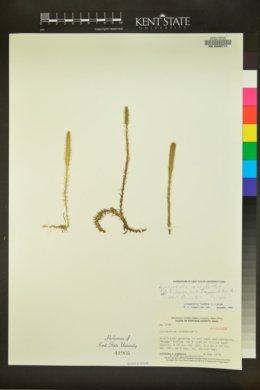Lycopodiella margueritae
|
|
|
|
Family: Lycopodiaceae
Prostrate Club-Moss
|
Horizontal stems flat on ground, 10--18 X 1--1.6 cm, stems (excluding leaves) thick, 1.8--2.2 mm diam.; leaves monomorphic, spreading, and nearly perpendicular to stem, 6--13 X 0.8--1.2 mm; marginal teeth 3--4 per side, mainly on proximal 1/2. Upright shoots 1(--2) per plant, 13--17 X 0.3--0.7 cm; strobilus 1/2--1/3 total length; leaves initially divergent, then incurved, almost appressed, 5--6 X 0.4--0.8 mm, marginal teeth 0--2 per side. Strobili 5--8 X 0.4--0.9 cm. Sporophylls appressed, incurved, 4--6 X 0.4--0.5 mm, marginal teeth absent. 2 n = 312. Lycopodiella margueritae forms apparently fertile hybrids with the other tetraploid species, L . subappressa. Its hybrids with the diploid L . inundata are sterile, however. Lycopodiella margueritae can be distinguished from L . appressa and L . subappressa by the rather thick and large strobili, 1/3--1/2 the total length of upright shoots, and the more spreading leaves of the strobili and upright shoots.
Perennial fern ally 10 - 25 cm tall Leaves: of upright stems spreading at first, but then incurved to almost appressed, stalkless, green, 5 - 6 mm long, 0.4 - 0.8 mm wide, linear to lance-shaped, and often with one or two pair of teeth. Spores: hundreds per sac, all of one kind, thick-walled, wrinkled, three-sectioned (trilete) with pointed angles. The spores give rise to the gametophyte (the sexual phase of the plant), which is small, pincushion-shaped, green, photosynthetic, and on substrate surface rather than buried. Upright stems: usually single, but sometimes two from same node, unbranched, green, leafy, and more slender than horizontal stem (3 - 7 mm diameter). Horizontal stem: on top of soil or substrate surface, 10 - 18 cm long, thick (10 - 16 mm diameter; excluding leaves 1.8 - 2.2 mm), covered with spreading, upcurved (nearly perpendicular to stem axis), 6 - 13 mm long, 0.8 - 1.2 mm wide, linear leaves with three to four teeth per side, and also with slender roots emerging on underside of stem. Similar species: Lycopodiella margueritae is often mistaken for L. inundata, but that species is smaller in stature (usually only 3.5 - 6 cm tall, the horizontal stem only 3 - 12 cm long and 0.5 - 0.9 cm wide), the leaves are usually non-toothed, the strobili are shorter (only to 2 cm), and the sporophylls are somewhat wider (0.5 - 0.9 mm). These two species do hybridize, but that hybrid is sterile. Also similar is L. subappressa, but that species has the leaves of the upright stems and strobili appressed, the strobili are usually shorter (only to 5 cm long) and only up to 2 mm thicker than the subtending upright stems, the leaves of the horizontal stem are usually non-toothed, and the horizontal stems are only 1 - 1.5 mm in diameter (excluding the leaves). These two species are known to hybridize, and the fertile hybrid has been reported in the Chicago Region. Habitat and ecology: Somewhat rare, usually in wet, acidic conditions such as ditches, swales, and sand pits. Occurence in the Chicago region: native Notes: This is probably the most common species of Lycopodiella in the Chicago Region. It has often been overlooked and categorized under the name L. inundata. Species of Lycopodiella hybridize freely, and when the parent species have the same ploidy level the hybrids are fertile. Lycopodiella margueritae can hybridize with the other two species of the Chicago Region, L. subappressa and L. inundata. Only the hybrids with L. subappressa are fertile. Etymology: Lycopodiella is a combination of the genus name Lycopodium, and the suffix ella, referring to the diminutive form (smaller) of this genus compared to Lycopodium. Margueritae is named in honor of Marguerite Bruce, friend and colleague of the authors of the species (G. Bruce, W.H. Wagner, Jr. and J.M. Beitel). Author: The Field Museum From Flora of Indiana (1940) by Charles C. Deam Indiana Coefficient of Conservatism: C = 10 Wetland Indicator Status: FACW Diagnostic Traits: plants of wet habitat; horizontal stems on substrate surface, their internodes more than 1 mm in diameter; upright shoots mostly 13-17 cm tall, their leaves spreading; strobili borne on leafy peduncles. |

